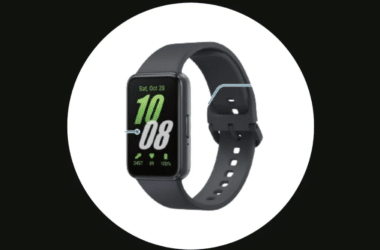Xiaomi HyperOS: A Game-Changer in the World of Smartphones
In the ever-evolving world of smartphones, Xiaomi HyperOS has once again raised the bar by introducing Xiaomi HyperOS. This exciting new operating system is all set to make its debut in India, promising an array of enhancements for Xiaomi, Redmi, and POCO phone users. In this article, we’ll delve into the details of this groundbreaking development and explore what you can expect from the Xiaomi HyperOS rollout in India.

Big Sale Amazon”
Amazon Sale, Discounted Deals & Offers Alert
and Get Upto 90% Discount on All products
Join Us Today
The Arrival of Xiaomi HyperOS in India
Last month, Xiaomi made waves by globally introducing Xiaomi HyperOS for select smartphones. Now, the much-anticipated OS is ready to hit the Indian market. Xiaomi HyperOS represents the next step in the evolution of Xiaomi’s operating systems, slated to succeed the renowned MIUI. This new OS brings forth a host of improvements under the hood, including enhancements for apps, AI features, and subtle changes to the user interface.
The Roadmap for Xiaomi HyperOS in India
Xiaomi, in an official announcement, revealed its plans for introducing HyperOS in India. While the exact launch date remains unconfirmed, the rollout is scheduled to commence within this month. Additionally, Xiaomi has unveiled the first set of devices that will receive the HyperOS update in India.
In this initial phase, Xiaomi 13 Pro and Xiaomi Pad 6 will be among the first devices to experience the HyperOS upgrade. However, it’s important to note that more devices are expected to join the roadmap in the near future. This rollout follows the global launch that included eight devices, such as Xiaomi 13 Ultra, Xiaomi 13 Pro, Xiaomi 13, Xiaomi 13T Pro, Xiaomi 13T, Redmi Note 12, Redmi Note 12S, and Xiaomi Pad 6. Excitingly, POCO F5 is also in line to receive the HyperOS update.
Xiaomi HyperOS: The Future of Mobile Performance
Xiaomi unveiled HyperOS in October last year, positioning it as the next-gen operating system for their devices. It is set to replace the long-running MIUI that has graced Xiaomi, Redmi, and POCO devices for years. What sets HyperOS apart is its strong emphasis on performance improvements, coupled with a significant focus on AI features. While it does incorporate some visual changes, the primary goal is to provide smoother animations and minor UI tweaks.
Exploring the Features of Xiaomi HyperOS
Now, let’s dive into the exciting features that Xiaomi HyperOS brings to the table:
Speed and Efficiency
HyperOS promises faster app boot times, ensuring that your favorite apps are ready to use in a snap. Moreover, it enhances the retention of apps in the background memory, ensuring a seamless multitasking experience.
Customization at Your Fingertips
For users who love personalization, HyperOS introduces new lockscreen customization options. This means you can tailor your device to reflect your unique style and preferences.
AI at Its Best
Xiaomi HyperOS is a treasure trove of AI capabilities. Users can enjoy AI-generated text through Xiaoai Input Assistant, which can be a game-changer for productivity. Additionally, you can capture text from photos and even transform your doodles into impressive paintings, all thanks to HyperOS’s AI-powered magic.
Enhanced Connectivity
HyperOS aims to redefine smartphone connectivity. With the ability to share your mobile data with other devices seamlessly, it simplifies your digital life. Furthermore, you can receive notifications on larger-screen devices, enhancing your overall smartphone experience.
Creative Possibilities
Are you looking to up your webcam game? Xiaomi HyperOS allows you to use your phone’s rear camera as a webcam, opening up exciting possibilities for online meetings, streaming, and content creation.
| Key Specs | |
|---|---|
| RAM | 8 GB |
| Processor | Qualcomm Snapdragon 7S Gen 2 |
| Rear Camera | 200 MP + 8 MP + 2 MP |
| Front Camera | 16 MP |
| Battery | 5100 mAh |
| Display | 6.67 inches (16.94 cm) |
| General | |
| Launch Date | January 4, 2024 (Expected) |
| Operating System | Android v13 |
| Custom UI | MIUI |
| Performance | |
| Chipset | Qualcomm Snapdragon 7S Gen 2 |
| CPU | Octa core (2.4 GHz, Quad core, Cortex A78 + 1.95 GHz, Quad core, Cortex A55) |
| Architecture | 64 bit |
| Fabrication | 4 nm |
| Graphics | Adreno 710 |
| RAM | 8 GB |
| RAM Type | LPDDR4X |
| Display | |
| Display Type | OLED |
| Screen Size | 6.67 inches (16.94 cm) |
| Resolution | 1220 x 2712 pixels |
| Aspect Ratio | 20:9 |
| Pixel Density | 446 ppi |
| Screen to Body Ratio (calculated) | 89.86 % |
| Screen Protection | Corning Gorilla Glass, Glass Victus |
| Bezel-less display | Yes with punch-hole display |
| Touch Screen | Yes, Capacitive Touchscreen, Multi-touch |
| HDR 10 / HDR+ support | Yes, HDR 10+ |
| Refresh Rate | 120 Hz |
| Design | |
| Height | 161.1 mm Compare Size |
| Width | 74.2 mm |
| Thickness | 7.9 mm |
| Weight | 187 grams |
| Colours | Midnight Black, Space White, Space Blue |
| Waterproof | Yes, Splash proof, IP54 |
| Ruggedness | Dust proof |
| Camera | |
| MAIN CAMERA | |
| Camera Setup | Triple |
| Resolution | 200 MP f/1.65, Wide Angle, Primary Camera (1.4″ sensor size, 0.56µm pixel size) |
| 8 MP f/2.2, Ultra-Wide Angle Camera (4.0″ sensor size, 1.12µm pixel size) | |
| 2 MP f/2.4, Macro Camera | |
| Sensor | S5KHP3, ISO-CELL |
| Autofocus | Yes, Phase Detection autofocus |
| OIS | Yes |
| Flash | Yes, Dual-color LED Flash |
| Image Resolution | 16300 x 12300 Pixels |
| Settings | Exposure compensation, ISO control |
| Shooting Modes | Continuous Shooting |
| High Dynamic Range mode (HDR) | |
| Film Camera | |
| Camera Features | Digital Zoom |
| Auto Flash | |
| Face detection | |
| Touch to focus | |
| Video Recording | 3840×2160 @ 30 fps |
| 1920×1080 @ 30 fps | |
| Video Recording Features | Slo-motion |
| FRONT CAMERA | |
| Camera Setup | Single |
| Resolution | 16 MP, Wide Angle, Primary Camera |
| Video Recording | 1920×1080 @ 30 fps |
| Battery | |
| Capacity | 5100 mAh |
| Type | Li-Polymer |
| Removable | No |
| Quick Charging | Yes, Fast, 67W: 100% in 44 minutes |
| USB Type-C | Yes |
| Storage | |
| Internal Memory | 128 GB |
| Expandable Memory | No |
| Storage Type | UFS 2.2 |
| Network & Connectivity | |
| SIM Slot(s) | Dual SIM, GSM+GSM |
| SIM Size | SIM1: Nano, SIM2: Nano |
| Network Support | 5G Supported in India, 4G Supported in India, 3G, 2G |
| VoLTE | Yes |
| SIM 1 | 5G Bands: FDD N1 / N3 / N5 / N8 / N28 |
| TDD N38 / N41 / N77 / N78 | |
| 4G Bands: TD-LTE 2600(band 38) / 2300(band 40) / 2500(band 41) / 2100(band 34) / 1900(band 39) | |
| FD-LTE 2100(band 1) / 1800(band 3) / 900(band 8) / 850(band 5) / 850(band 19) | |
| 3G Bands: UMTS 1900 / 2100 / 850 / 900 MHz | |
| 2G Bands: GSM 1800 / 1900 / 850 / 900 MHz | |
| GPRS: Available | |
| EDGE: Available | |
| SIM 2 | 5G Bands: FDD N1 / N3 / N5 / N8 / N28 |
| TDD N38 / N41 / N77 / N78 | |
| 4G Bands: TD-LTE 2600(band 38) / 2300(band 40) / 2500(band 41) / 2100(band 34) / 1900(band 39) | |
| FD-LTE 2100(band 1) / 1800(band 3) / 900(band 8) / 850(band 5) / 850(band 19) | |
| 3G Bands: UMTS 1900 / 2100 / 850 / 900 MHz | |
| 2G Bands: GSM 1800 / 1900 / 850 / 900 MHz | |
| GPRS: Available | |
| EDGE: Available | |
| Wi-Fi | Yes, Wi-Fi 5 (802.11 a/b/g/n/ac) 5GHz, MIMO |
| Wi-Fi Features | Wi-Fi Direct, Mobile Hotspot |
| Bluetooth | Yes, v5.2 |
| GPS | Yes with A-GPS, Glonass |
| NFC | Yes |
| USB Connectivity | Mass storage device, USB charging |
| Multimedia | |
| FM Radio | No |
| Stereo Speakers | Yes |
| Loudspeaker | Yes |
| Audio Jack | 3.5 mm |
| Audio Features | Dolby Atmos |
| Sensors | |
| Fingerprint Sensor | Yes |
| Fingerprint Sensor Position | On-screen |
| Fingerprint Sensor Type | Optical |
| Other Sensors | Light sensor, Proximity sensor, Accelerometer, Compass, Gyroscope |
Conclusion
The arrival of Xiaomi HyperOS in India marks a significant milestone in the world of smartphones. With its focus on performance enhancements, AI capabilities, and user-friendly features, it promises to take your mobile experience to new heights. Keep an eye out for the official rollout date, and be ready to embrace the future of smartphone operating systems with Xiaomi HyperOS.
FAQs
- When will Xiaomi HyperOS be available in India?
- Xiaomi has announced that the rollout will begin within this month, but the exact date is yet to be confirmed.
- Which devices will receive the HyperOS update in India?
- Xiaomi 13 Pro and Xiaomi Pad 6 are among the first devices to receive the HyperOS update, with more devices expected to follow.
- What sets Xiaomi HyperOS apart from MIUI?
- HyperOS places a strong emphasis on performance improvements and AI features while also introducing subtle visual changes.
- Can I customize my lockscreen with Xiaomi HyperOS?
- Yes, HyperOS offers new lockscreen customization options, allowing you to personalize your device to suit your style.
- How does HyperOS enhance smartphone connectivity?
- HyperOS enables you to share your mobile data with other devices and receive notifications on larger screens, improving connectivity and convenience.












